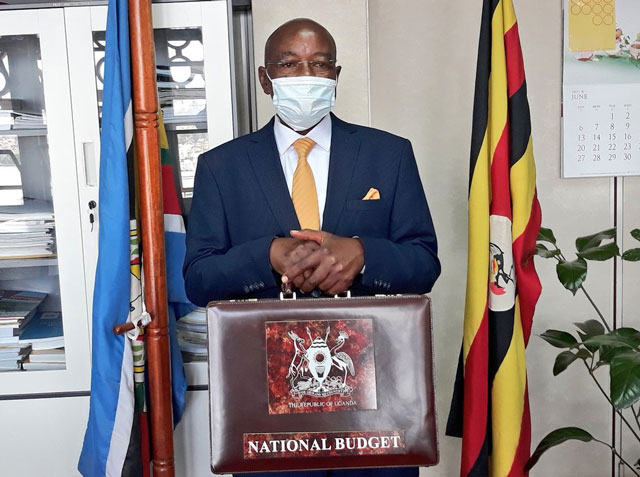Felled shea nut trees in the project area/ Photo by Emmy Daniel Ojara
The government has come under sharp criticism from the Acholi Chiefdom over the extensive and uncontrolled destruction of “sacred traditional trees’’ in the Acholi sub-region under the of promoting food security.
Gov`t through the National Animal Genetic Resources Centre and Data Bank (NAGRC&DB) and the Ministry of Agriculture, Animal Industry and Fisheries (MAAIF) are currently involved in growing cereals on thousands of acres of land in Angagura, Ajan, and Laguti Sub Counties and parts of Nwoya district as part of ensuring food security and improve animal production.
The other participating agencies include Uganda Prisons Services-UPS, Uganda People`s Defence Force-UPDF, the National Agricultural Research Organization (NARO), and the National Executive Committee of the ruling National Resistance Movement (NRM) party.
However, traditional leaders and elders in the project areas are accusing NAGRC&DB of siding with powerful individuals to cut down and destroy ‘’sacred traditional trees’’ including Shea nut (locally known as yaa), Afzelia Africana (Beyo), Philenoptera Laxiflora (Olwedo), and, Kigelia Africana (Okango).
They say that besides the economic relevance of the project, its implementers are indiscriminately felling protected tree species in the disguise of implementing the project.
The forest products are reportedly being sold out for charcoal dealers, logs, and timber and are frequently seen being transported from the project areas under the protection of armed security personnel.
The said trees are hardwood and produce high-quality charcoal, timbers, and logs, which are lucrative in central Uganda and outside the country.
The traditional trees, which are considered sacred in Acholi are predominantly used ceremonially for rituals, enthronement, appeasing the gods, conflict resolution and mediation, restoring peace, seeking blessings from the gods, bringing good luck as well as invoking good omens and fortune.
The prominence and value of the traditional trees rose to the attention of the world at the peak of the rebel Lord`s Resistance Army-LRA insurgency when the Acholi traditional leaders used some of the trees to woo the rebels to return home or give protection to the community from attacks and bad omens at that time.
Lalobo Valentino, the Chairperson of the Natural Resource Committee in Pungole Parish and Payira Clan council member told URN during an interview that hundreds of the traditional trees have already been destroyed and used for timbers, logs, and charcoal by NAGRC&DB.
Lalobo says he personally met and interacted with NAGRC&DB officials and asked them not to destroy the trees because of their uniqueness but they chose not to appreciate or respect the values of the Acholi tradition.
According to Lalobo, the destruction of the ‘’sacred traditional trees’’ is threatening the livelihood of the people as it might attract bad omens such as lightning strikes and the destruction of crops.
Opira Kasumu Pa Obwona, the Chairperson of Payira Clan told URN that he instructed his council to immediately stop the destruction of the sacred trees within ‘’Aswa Ranch’’ but NAGRC&DB turned a deaf ear.
Opira explains that once the tree is cut down, it calls for cleansing and appeasing of the gods by the cultural institution, which involves the slaughtering of cattle, goats, and a cock.
Florence Acut, an elderly woman said the destruction of the sacred trees is a big threat to the culture of Acholi.
Acut, who is demanding an immediate halt to the destruction of the sacred traditional trees, says women use the shea nut butter to keep newly born babies healthy.
Filder Adok Lacankwite, says she is extremely saddened by the move to wipe out the traditional trees and what she described as a war on the culture of Acholi.
Santa Okot, the Aruu North Member of Parliament, says that members of the community are so aggrieved by the damage caused to their cultural affiliation and the threat to their heritage.
She adds that the suspicion against the actions of NAGRC&DB makes sense due to the extension of their projects on the community land without consulting area leaders.
Rwot Oywelo Picho of Ariya Clan in Got Apwoyo Sub County in Nwoya district where the same project is being implemented has raised similar concerns. However, Dr. Peter Bein the Executive Director of NAGRC&DB has downplayed the allegations noting that they are environmentally conscious and not destroying traditional trees.
He maintained that the activities on the land are meant to enhance livestock and food productivity in the area and country
Joseph Otim, the National Forestry Authority (NFA) sector manager for Aswa River Range decries the extensive forest destruction in the area under the pretext of government programs noting that it requires concerted efforts to avert it.
On Friday our reporter visited Bur Lobo Parish in Angagura Sub County, Pader district, and discovered that thousands of the traditional trees have been uprooted, cut down, chopped into pieces, and stacked in logs.
Tractors and excavators were also found operating in the area, opening up the land while breakdown trucks were also seen loaded with logs. Casual workers found on the ground told this reporter on conditions of anonymity that they were instructed by their bosses to fell the traditional trees.
The symbolisms of The Traditional Shea Nut, Okango, and Olwedo Trees
The shea nut tree (yaa) and its seeds in the Acholi-Luo of Northern Uganda produce butter which is realized from handmade extractions of the fruit`s fatty kernels.
It is used ceremonially for example in anointing warriors for battle, enthroning a cultural leader, and naming newborn babies. It also evokes exuberant health and youthful skin among various food nutrients.
On the other hand, the Philenoptera Laxiflora (Olwedo) is a much revered symbolic tree representing peace. Its leaves are commonly used among the Acholi people to bring peace between conflicting parties, bring blessings and good luck, calm hardships, stop sufferings, facilitate a reconciliation process, as well as invoking good omens and good fortune.
The Olwedo leaves were widely used to mediate peace talks between the LRA rebel group and the Acholi community, welcome the LRA returnees, lead ways for peace mediators, protect night commuters and those sleeping in the bush, and seek the intervention of the Acholi spirits in the war.
Meanwhile, Okango is a tree that symbolizes the strength, protection, and power of the gods. It is also ceremonially used as a guard in the homestead and symbolizes divinity when naming children believed to have come from the gods of the land.
They include twins (Ocen, Opiyo, Apiyo, and Acen) (rudi), those with extra fingers or extra nails (Ojara and Lajara), one who came out with the legs first (Odoch and Adoch), Ojok and Ajok (that belonging to the gods), that born during rain (Okot and Akot).
-URN





